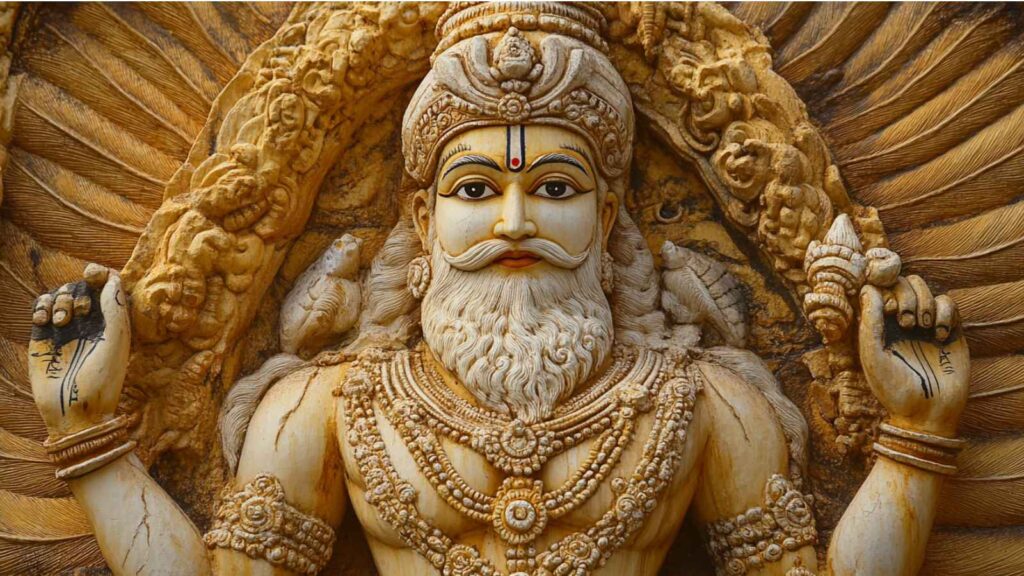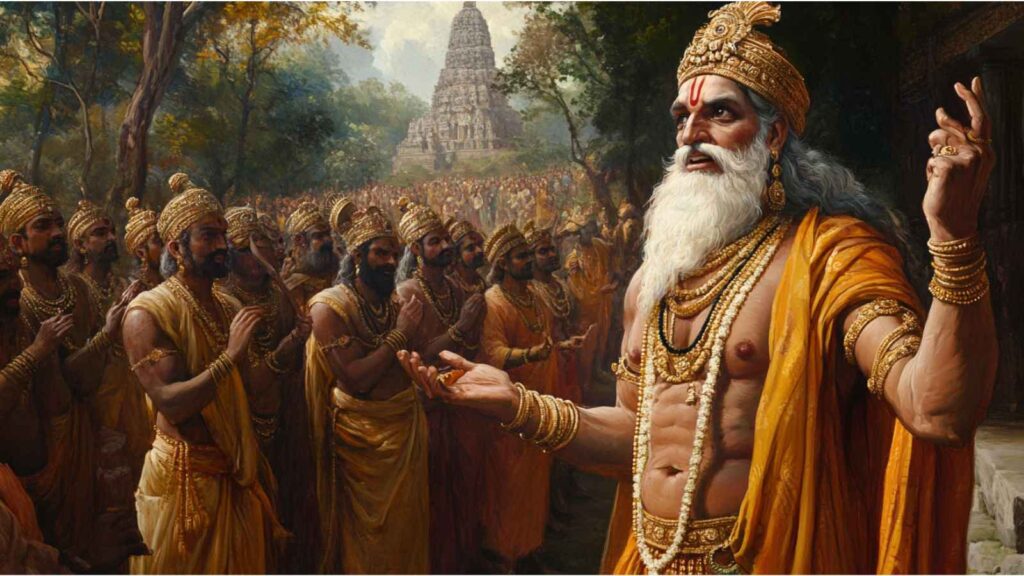Atharvaveda: Ancient Hindu Remedies and Magical Formulations Explained
The Atharvaveda is one of the four Vedas, a revered collection of ancient Hindu scriptures that lay the foundation of spiritual and philosophical thought in Hinduism. Unlike the other three Vedas—Rigveda, Samaveda, and Yajurveda, which are mainly focused on hymns, rituals, and sacrificial practices—the Atharvaveda is distinguished by its emphasis on practical knowledge. This text deals with the everyday life of humans, addressing not only spiritual matters but also health, medicine, magic, and societal well-being.
Read More About sacred texts
In this blog, we will explore the Atharvaveda in depth, focusing on its medicinal and magical formulations. From healing mantras and remedies for diseases to protective spells and charms, the Atharvaveda offers a fascinating insight into the holistic view of life and the connection between physical, mental, and spiritual health. We will also examine its influence on contemporary Hinduism and the continuing relevance of its teachings.
What is the Atharvaveda?

The Atharvaveda is one of the four Vedic texts, traditionally attributed to the sage Atharva Rishi, along with his disciple Angiras. The name “Atharvaveda” itself comes from the words “Atharva,” referring to the sage, and “Veda,” which means “knowledge” or “wisdom.” The Atharvaveda consists of hymns, incantations, spells, and rituals that are meant to be used for practical purposes in daily life, such as healing, protection, and even the resolution of personal issues.
In contrast to the Rigveda’s focus on praises to deities and the Yajurveda’s emphasis on rituals and sacrifices, the Atharvaveda provides insights into the practicalities of life. It includes remedies for ailments, mental and physical wellness, and ways to ward off evil, as well as spells for success in personal and community affairs.
Key Features of the Atharvaveda:
- Healing Rituals: Focus on physical, mental, and emotional well-being.
- Magical Formulations: Spells and incantations designed to bring protection, success, and good fortune.
- Philosophical Teachings: An integration of spiritual wisdom with everyday concerns, reflecting the holistic view of life in ancient India.
Historical Background of the Atharvaveda

The Atharvaveda is thought to have been composed around 1200-1000 BCE, although its hymns likely circulated orally long before they were written down. It is considered to be the youngest of the four Vedas, drawing on the spiritual and philosophical wisdom of the earlier Vedic texts but also introducing new concepts related to healing and magic.
While the first three Vedas (Rigveda, Samaveda, and Yajurveda) are primarily concerned with the divine and ritualistic practices, the Atharvaveda takes a more human-centered approach, addressing societal and personal needs. This Veda acknowledges the belief that human beings are connected not just to the divine but also to the natural world and the forces of nature.
The Atharvaveda also represents a fusion of ritualistic Brahmanic practices with folk traditions. It contains hymns that are practical and geared toward the common people, reflecting the more pragmatic and earthy aspect of Vedic thought.
Structure and Content of the Atharvaveda
The Atharvaveda is divided into 20 books (or Kandas), each of which is further subdivided into hymns (Sutras). It contains approximately 730 hymns and over 6,000 mantras. The content of the Atharvaveda can be broadly classified into four main categories:
- Hymns to the Gods: These are prayers and invocations to deities like Agni (fire), Indra, and Varuna, asking for blessings, protection, and divine guidance.
- Magical Formulas and Incantations: The Atharvaveda contains numerous spells and charms to invoke blessings, ward off evil, and protect from diseases or harmful forces. These magical formulations reflect the deep connection between the material and spiritual worlds in ancient Hindu thought.
- Healing and Medicinal Remedies: Many hymns in the Atharvaveda are dedicated to healing, offering remedies for diseases and ailments. This includes the use of medicinal plants, herbs, and mantras that are believed to have therapeutic powers. The Veda presents a fascinating mix of natural healing practices and spiritual rituals.
- Prayers for Prosperity and Success: The Atharvaveda also includes prayers for material success, social harmony, and family well-being. These prayers are designed to bring about prosperity, wealth, and good fortune, both on a personal and community level.
Ancient Hindu Remedies in the Atharvaveda
One of the most fascinating aspects of the Atharvaveda is its extensive coverage of remedies for health, illness, and healing. These remedies are based on a combination of spiritual power, herbal knowledge, and divine invocation. The Atharvaveda suggests that illnesses could be caused by imbalances in the body, bad karma, or the influence of malevolent spirits, and it offers practical and spiritual solutions for each of these causes.
Healing Mantras and Herbal Remedies
- Mantras for Healing: The Atharvaveda includes numerous mantras that are believed to have the power to cure diseases, both physical and mental. These mantras are often recited during rituals or as part of personal healing practices. Some of these mantras invoke specific deities like Aushadhi (the deity of herbs) to grant healing powers.
- Herbal Remedies: The text offers descriptions of medicinal plants and herbs used in ancient India for healing. Herbs such as turmeric, neem, and ginger were commonly prescribed for their therapeutic properties. In fact, the knowledge of herbs and their healing properties in the Atharvaveda laid the foundation for what later became Ayurveda, the ancient Indian system of medicine.
Remedies for Protection
Protection against harm, both physical and spiritual, is another key aspect of the Atharvaveda. The text describes various rituals, spells, and mantras that are believed to offer protection against evil spirits, enemies, and misfortune. One of the most famous magical spells from the Atharvaveda is the “Brahma Raksha,” which is a protective incantation to ward off negative energies.
The Role of Magic in the Atharvaveda
The magical aspect of the Atharvaveda is perhaps the most distinct feature of this text when compared to the other Vedas. Magic, in the context of the Atharvaveda, is not merely about casting spells but about harnessing the hidden forces of nature and the universe to bring about desired changes.
Magic for Prosperity
The Atharvaveda contains magical spells designed to bring material success. These include invocations for wealth, success in battle, and even finding a suitable partner. The text reflects the ancient belief that human life is not just about spiritual progress but also about material well-being, social harmony, and family happiness.
Magic for Healing and Mental Well-being
Magic is also used in the Atharvaveda for healing emotional and mental wounds. Spells are used to calm the mind, bring peace, and relieve stress or anxiety. These magical formulations are aimed at restoring the balance between the physical and the spiritual worlds, ensuring harmony in one’s life.
Philosophical Insights from the Atharvaveda
Although the Atharvaveda is best known for its practical knowledge, it also contains profound philosophical insights into the nature of life, death, and the afterlife. The Veda reflects a deep understanding of the cyclical nature of existence and the interconnectedness of all life.
The Concept of the Soul
One of the recurring themes in the Atharvaveda is the concept of the soul (Atman) and its journey after death. The Atharvaveda views death as a transition rather than an end. It speaks about the afterlife, where the soul moves on to a new existence, emphasizing the continuity of life beyond physical death.
The Holistic View of Life
The Atharvaveda takes a holistic approach to life, viewing health, wealth, and spiritual growth as interconnected. It teaches that well-being is achieved when there is harmony between body, mind, and spirit. This concept has deeply influenced Hinduism’s broader philosophical teachings on dharma (righteous living) and moksha (liberation).
Conclusion
The Atharvaveda offers a fascinating glimpse into ancient Hindu thought, blending spiritual teachings with practical knowledge for everyday life. It emphasizes the importance of healing, protection, and prosperity, as well as the interconnectedness of all aspects of life. The remedies, magical formulations, and philosophical teachings of the Atharvaveda continue to resonate in contemporary Hinduism, reminding us of the enduring relevance of this ancient wisdom.


